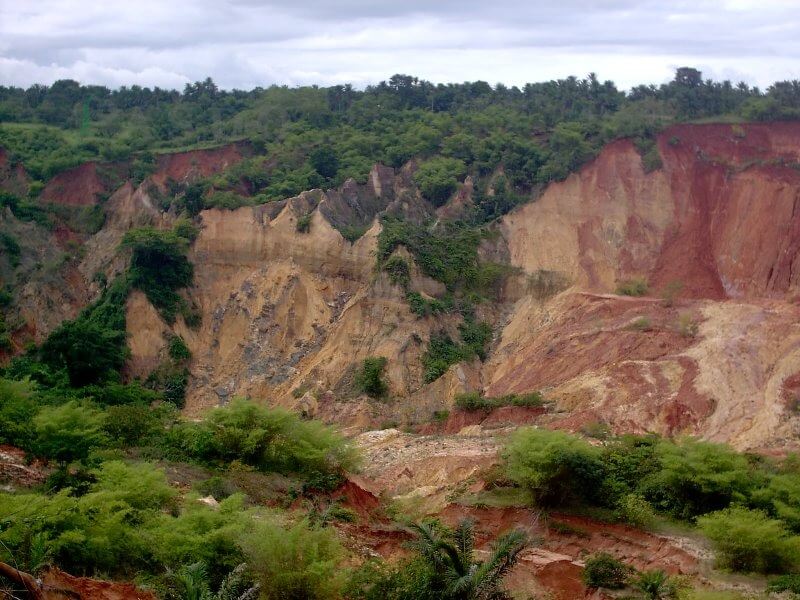Impacts/Effects of Climate Change in Africa and Nigeria:
Gully Erosion, Landslides, Flooding, Drought, Desertification and Desert Encroachment

These gully erosion and landslide activities are believed to be among the worst impacts of climate change in Africa.
Arguably the worst impact of climate change in Africa is the problem of gully erosion and landslides around the Nanka areas.
Supporting those suffering from the impacts of climate change is a moral, social & economic imperative”.
Drought, Desertification and Desert Encroachment.
Higher temperatures associated with global warming results to increased evaporation from the surface of the earth.
So, historically dry areas across Africa are getting drier.
In the northern part of Nigeria, the area of dryland is continually expanding, as increased evaporation occurs.
So the Sahara desert in the far north of Nigeria is encroaching into useful land.
Drought, desertification (or desert encroachment) is a big issue in northern Nigeria and other parts of Africa where arable land have been continually shrinking.
This has a major effect on agricultural productivity, food security, hunger and poverty levels as a majority of the human population in these areas depend on agricultural proceeds for sustenance.
Torrential Rainfall, Flooding
Higher temperatures associated with global warming results to increased evaporation from the surface of the earth.
Increased evaporation means formation of more mass of cloud, heavier/torrential rainfall and consequent flooding.
Various parts of Africa and Nigeria experience torrential rainfall and flooding due to climate change.
Heavier than normal rainfall and flooding destroy crops and cause investment losses to farmers and shortage of food in the next harvest season.
But the effect of flooding goes beyond agriculture.
Houses get sunk, people get displaced and become refugees, businesses and livelihoods are lost, diseases spread and some people pay the ultimate price with their life when they get drowned.
On another hand, higher temperatures as a result of global warming continuously melts up the glaciers and ice caps in temperate regions.
These massive glaciers melt into the oceans and water bodies, leading to rise in sea levels and consequent implications for connected rivers.
So, low lying coastal areas across Africa and in Nigeria are affected by the rise in sea level.
When combined with the effect of torrential rainfall, the result is usually better imagined than experienced.
In the 2022 flood events in Nigeria, about 1.4 million people were displaced, 612 people lost their lives, 200,000 homes were completely or partially destroyed, and 110,000 hectares of farmland were destroyed.
Gully erosion and landslide.
Believed to be the worst impact of climate change in Nigeria and Africa is the problem of gully erosion and landslides that are most prevalent in the Nanka areas.
The combination of torrential rainfall and sea level rise cause surface and subsurface flooding activities that are above the limits that the soil formation in certain parts of Africa and Nigeria can handle.
Nanka, Agulu, Ekwulobia, Oko and surrounding communities in Anambra state (classified as Nanka areas) as well as most parts of the south eastern geopolitical region of Nigeria suffer this problem.
See the ways in which climate change, via gully erosion and landslide activities, affect Africa and Nigeria (in pictures).
Impact of Climate Change on Education, Health and Housing Infrastructure In Africa (pictures).

These gully erosion and landslide activities are believed to be among the worst impacts of climate change in Africa.